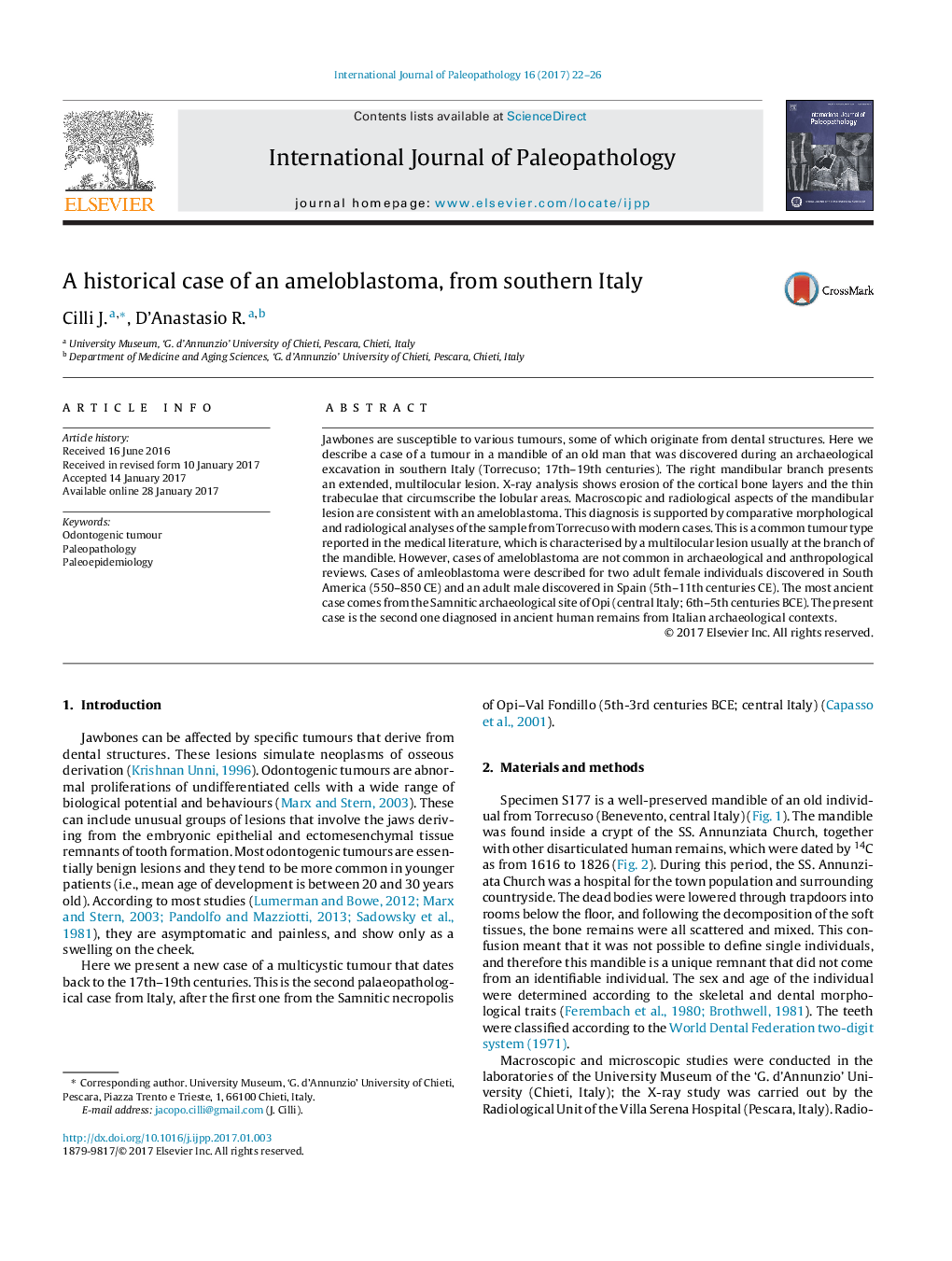| Article ID | Journal | Published Year | Pages | File Type |
|---|---|---|---|---|
| 4760560 | International Journal of Paleopathology | 2017 | 5 Pages |
Jawbones are susceptible to various tumours, some of which originate from dental structures. Here we describe a case of a tumour in a mandible of an old man that was discovered during an archaeological excavation in southern Italy (Torrecuso; 17th-19th centuries). The right mandibular branch presents an extended, multilocular lesion. X-ray analysis shows erosion of the cortical bone layers and the thin trabeculae that circumscribe the lobular areas. Macroscopic and radiological aspects of the mandibular lesion are consistent with an ameloblastoma. This diagnosis is supported by comparative morphological and radiological analyses of the sample from Torrecuso with modern cases. This is a common tumour type reported in the medical literature, which is characterised by a multilocular lesion usually at the branch of the mandible. However, cases of ameloblastoma are not common in archaeological and anthropological reviews. Cases of amleoblastoma were described for two adult female individuals discovered in South America (550-850 CE) and an adult male discovered in Spain (5th-11th centuries CE). The most ancient case comes from the Samnitic archaeological site of Opi (central Italy; 6th-5th centuries BCE). The present case is the second one diagnosed in ancient human remains from Italian archaeological contexts.
